In February 1974, a fire destroyed the Maryland Theatre’s original apartment building facade and ground floor theatre entrance, leaving a permanent void along the street fabric in Hagerstown, Md.
A new small lobby was built in 1978 and the interior was slowly renovated from 2010 to 2016, but for 46 years the theatre had zero street presence. A community effort to spur development in Hagerstown City Center looked to change that. In 2018, The Maryland Theatre renovation project began construction. The goal of the project was to expand the theatre’s draw and bring more patrons to the city center.
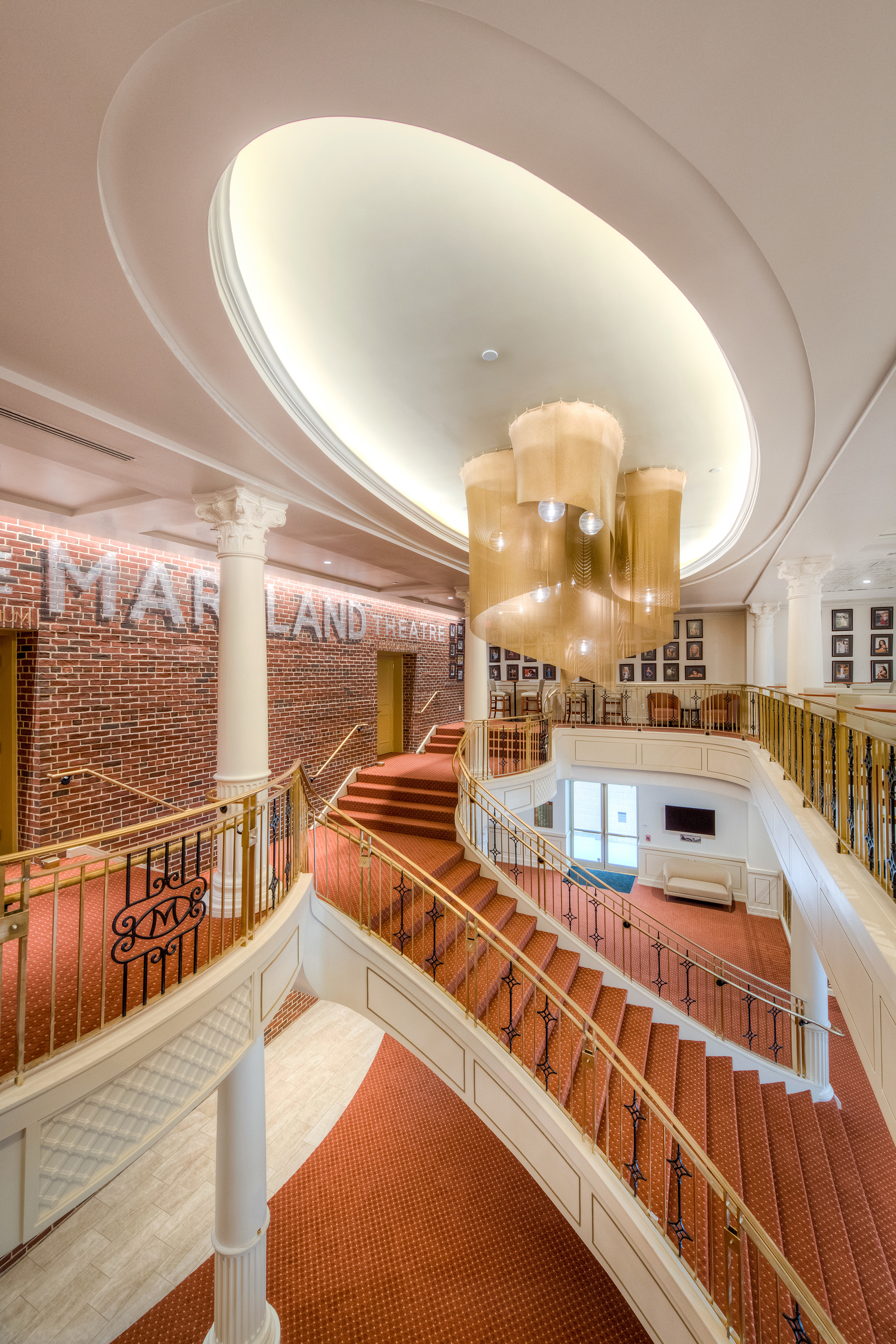
Grimm + Parker Architects designed a new 32,000-sf, five-story expansion that reclaims the theatre’s street presence and gives Hagerstown, Md., the public spaces it always needed. While in the past it was easy for visitors to walk or drive down the main city street and never notice the Maryland Theatre was even there, the new addition fills the urban void with a new eye-catching facade worthy of the theatre’s historic status.
Stained glass from the original building was salvaged and reused in the stair tower while a glass tile frieze, inspired but the theatre across the street, adorns the facade. The canopy design is based on the original canopy design that was destroyed in the 1974 fire.
In addition to creating a new street presence, the design also looked to correct many of the deficiencies with the existing theatre. Raising up the exterior theatre walkway improved functionality. The new walkway at grade created an ADA accessible stage loading door; allowed house right egress to be relocated at grade, making the theatre interior symmetrical; and created new space for a tunnel that gives performers access from front-of-house to back-of-house.
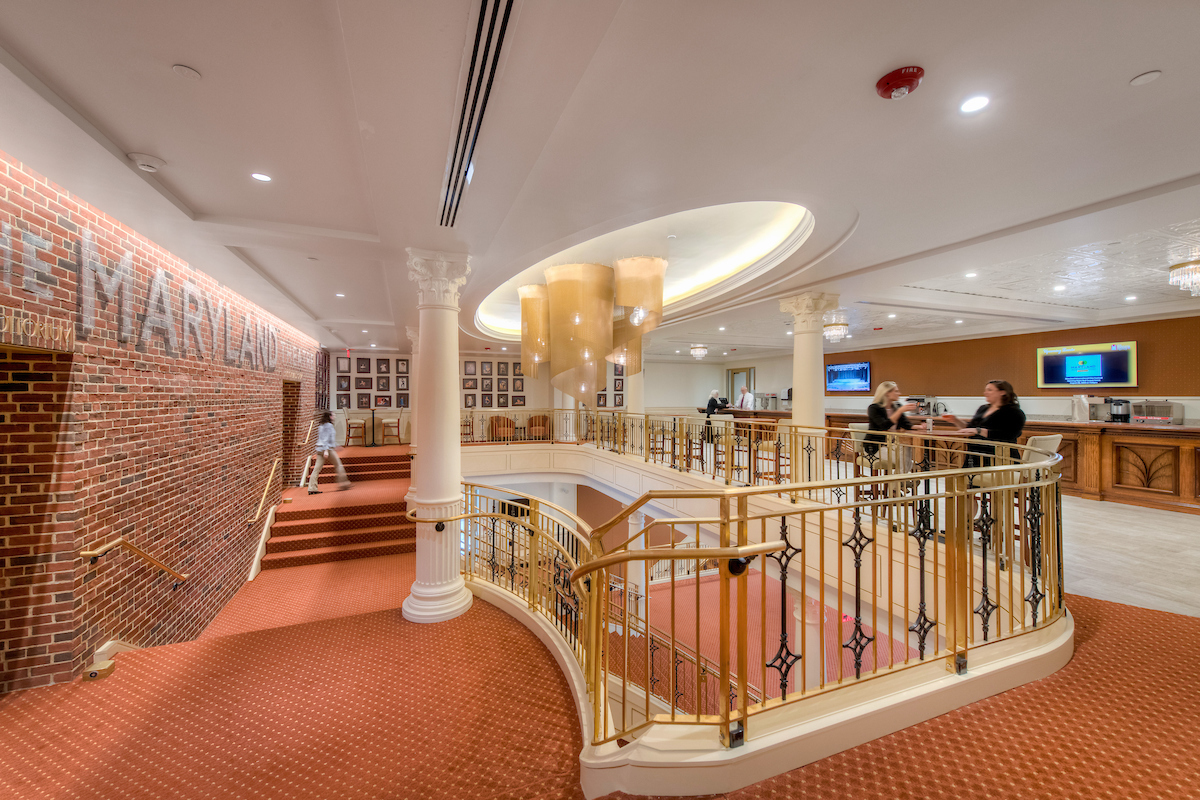
Theatre circulation was also improved. The original theatre had only one public entrance and exit, which created congestion when the up to 1,300 patrons exited after a show. The new addition increased circulation dramatically by providing egress in three more locations, adding additional front-of-house spaces, and improving overall safety.
Interior brick was used on the new addition to signify the Historic Theatre threshold. The brick features a painted sign similar to the one on the prominent exterior rear wall. The new lobby design, meanwhile, references the existing elliptical dome in the rear of the theatre. A new secure basement and bridge connection to the adjacent public Performing Arts High School allows high school students to use the rehearsal studio and stage.
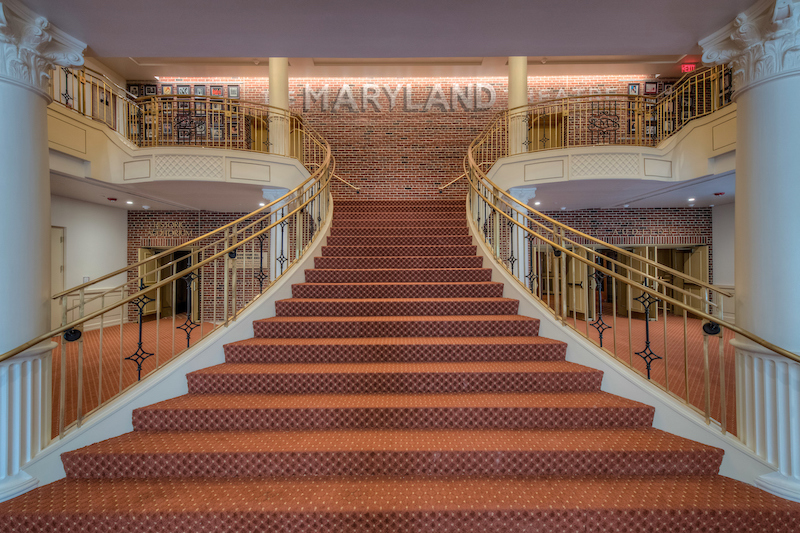
Floor one, the orchestra floor, features the theatre, the grand lobby, and offices. The second floor mezzanine features the theatre balcony, the new mezzanine lobby, a conference room, and Maryland Symphony Orchestra offices. The third floor includes a rehearsal studio, a volunteer lounge, dressing rooms, and a VIP lounge. The fourth floor comprises the Grand Ballroom and a catering kitchen. Restrooms and a gallery are included below grade.
The theatre was able to remain open for the majority of construction. Scaffolding was dressed up with sparkle lights, and plexiglass views to the work being done gave patrons a window into the building’s transformation.
PROJECT INFORMATION: Size 32,000 sf Construction start and finish June 1, 2018 - October 11, 2019 Cost $12,200,000 Delivery method Design/Bid/Build
BUILDING TEAM: Submitting firm Grimm + Parker Architects Owner/Developer The Maryland Theatre Architect Grimm + Parker Architects SE Matonak, Snyder & Associates MEP Alban Engineering Inc. GC Morgan-Keller Construction
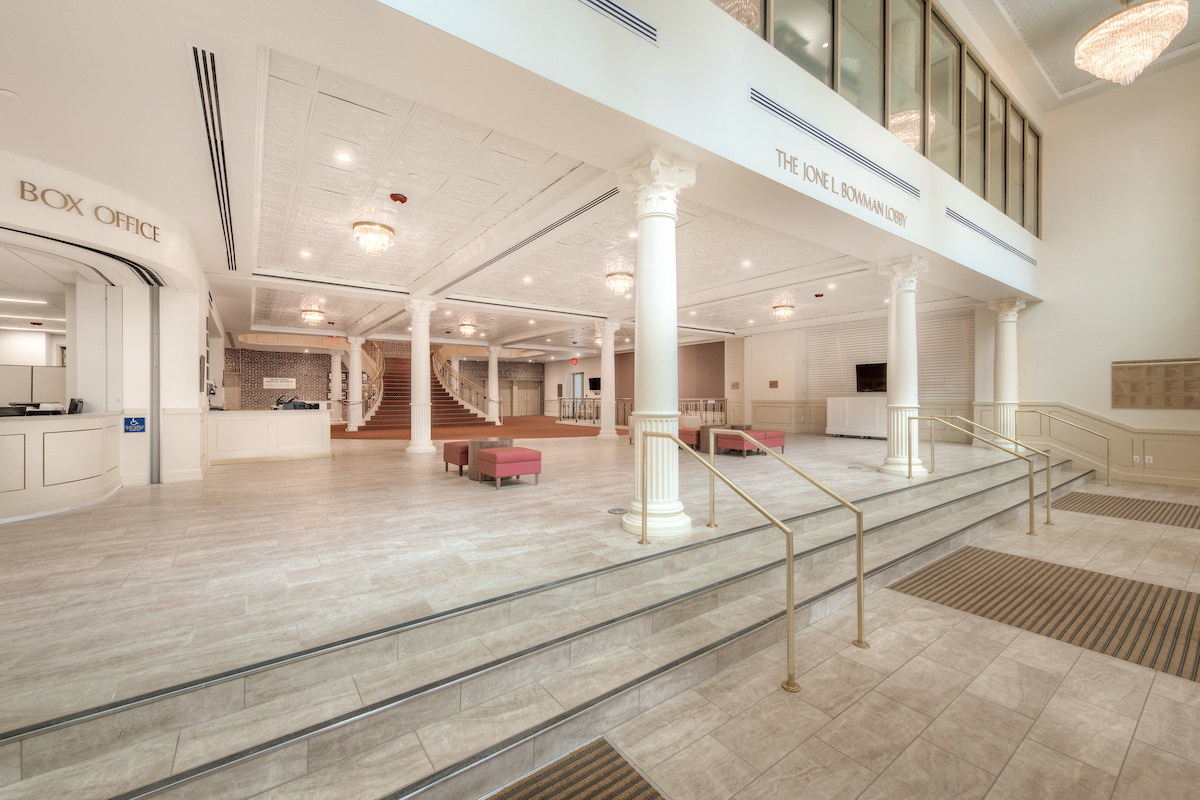
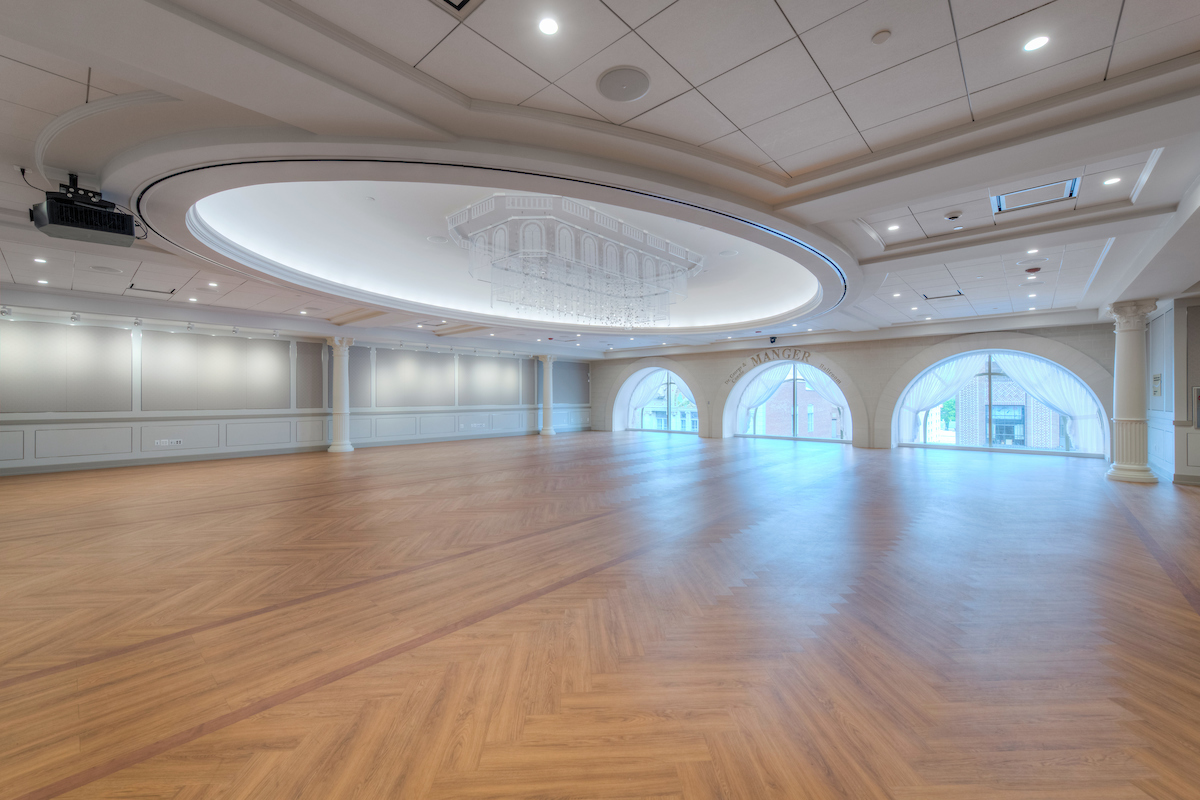
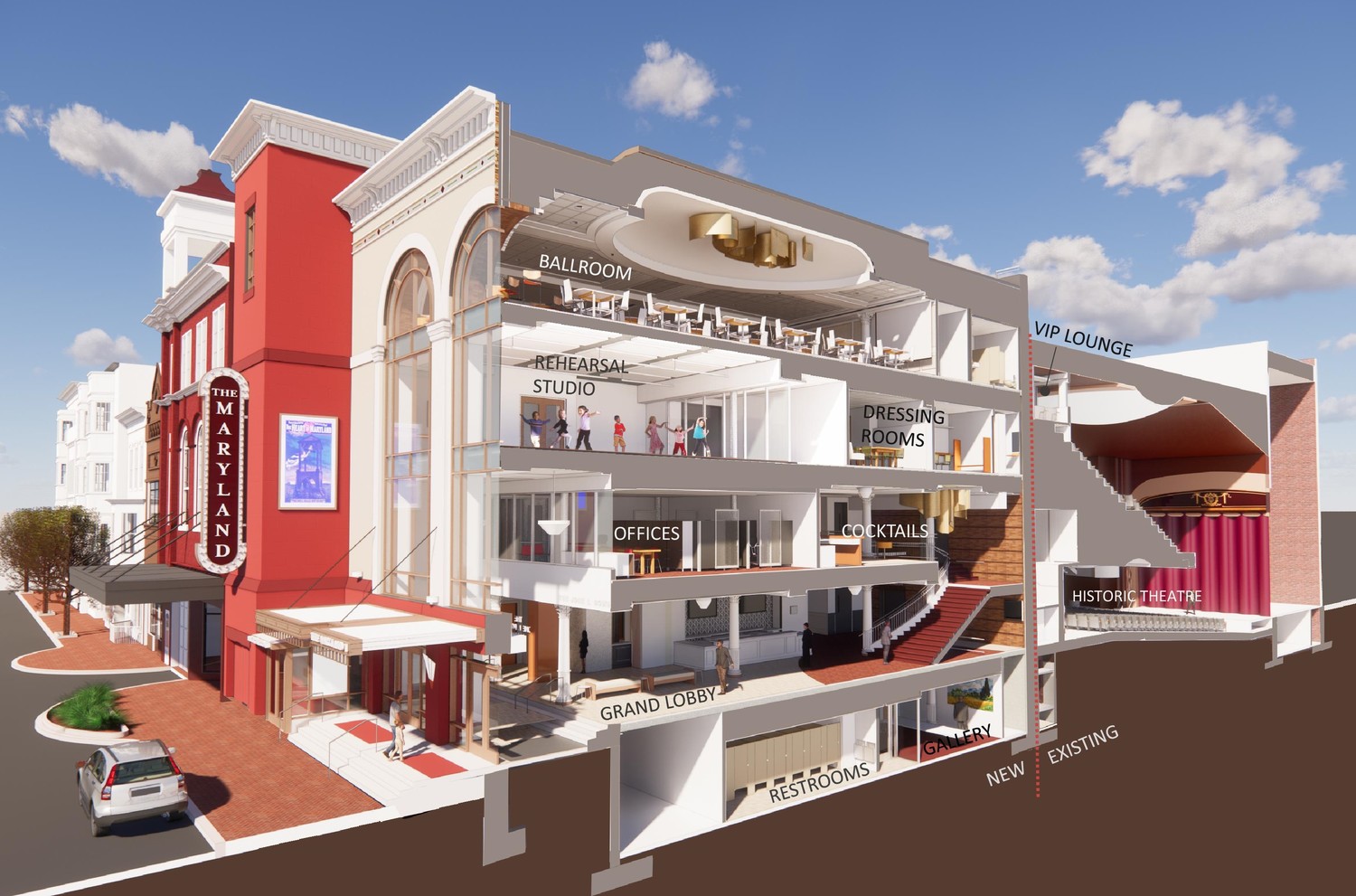
Related Stories
Libraries | Oct 30, 2024
Reasons to reinvent the Midcentury academic library
DLR Group's Interior Design Leader Gretchen Holy, Assoc. IIDA, shares the idea that a designer's responsibility to embrace a library’s history, respect its past, and create an environment that will serve student populations for the next 100 years.
Adaptive Reuse | Oct 22, 2024
Adaptive reuse project transforms 1840s-era mill building into rental housing
A recently opened multifamily property in Lawrence, Mass., is an adaptive reuse of an 1840s-era mill building. Stone Mill Lofts is one of the first all-electric mixed-income multifamily properties in Massachusetts. The all-electric building meets ambitious modern energy codes and stringent National Park Service historic preservation guidelines.
Brick and Masonry | Oct 7, 2024
A journey through masonry reclad litigation
This blog post by Walter P Moore's Mallory Buckley, RRO, PE, BECxP + CxA+BE, and Bob Hancock, MBA, JD, of Munsch Hardt Kopf & Harr PC, explains the importance of documentation, correspondence between parties, and supporting the claims for a Plaintiff-party, while facilitating continuous use of the facility, on construction litigation projects.
Adaptive Reuse | Sep 12, 2024
White paper on office-to-residential conversions released by IAPMO
IAPMO has published a new white paper titled “Adaptive Reuse: Converting Offices to Multi-Residential Family,” a comprehensive analysis of addressing housing shortages through the conversion of office spaces into residential units.
Codes and Standards | Sep 3, 2024
Atlanta aims to crack down on blighted properties with new tax
A new Atlanta law is intended to crack down on absentee landlords including commercial property owners and clean up neglected properties. The “Blight Tax” allows city officials to put levies on blighted property owners up to 25 times higher than current millage rates.
Resiliency | Sep 3, 2024
Phius introduces retrofit standard for more resilient buildings
Phius recently released, REVIVE 2024, a retrofit standard for more resilient buildings. The standard focuses on resilience against grid outages by ensuring structures remain habitable for at least a week during extreme weather events.
Adaptive Reuse | Aug 29, 2024
More than 1.2 billion sf of office space have strong potential for residential conversion
More than 1.2 billion sf of U.S. office space—14.8% of the nation’s total—have strong potential for conversion to residential use, according to real estate software and services firm Yardi. Yardi’s new Conversion Feasibility Index scores office buildings on their suitability for multifamily conversion.
Adaptive Reuse | Aug 22, 2024
6 key fire and life safety considerations for office-to-residential conversions
Office-to-residential conversions may be fraught with fire and life safety challenges, from egress requirements to fire protection system gaps. Here are six important considerations to consider.
Reconstruction & Renovation | Aug 19, 2024
Movement to protect historic buildings raises sharp criticism
While the movement to preserve historic buildings has widespread support, it also has some sharp critics with well-funded opposition groups springing up in recent years. Some opponents are linked to the Stand Together Foundation, founded and bankrolled by the Koch family’s conservative philanthropic organization, according to a column in Governing magazine.
Sustainability | Aug 14, 2024
World’s first TRUE Zero Waste for Construction-certified public project delivered in Calif.
The Contra Costa County Administration Building in Martinez, Calif., is the world’s first public project to achieve the zero-waste-focused TRUE Gold certification for construction. The TRUE Certification for Construction program, administered by Green Business Certification Inc. (GBCI), recognizes projects that achieve exceptional levels of waste reduction, reuse, and recycling.

















